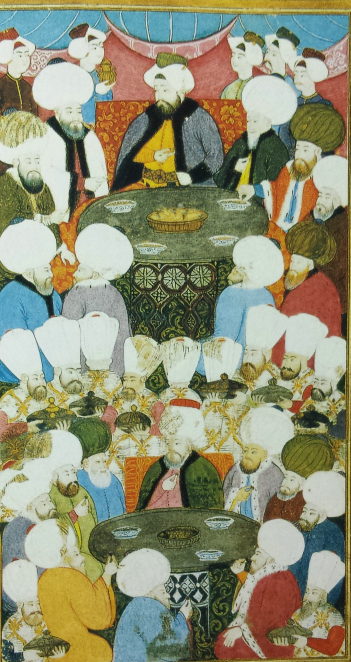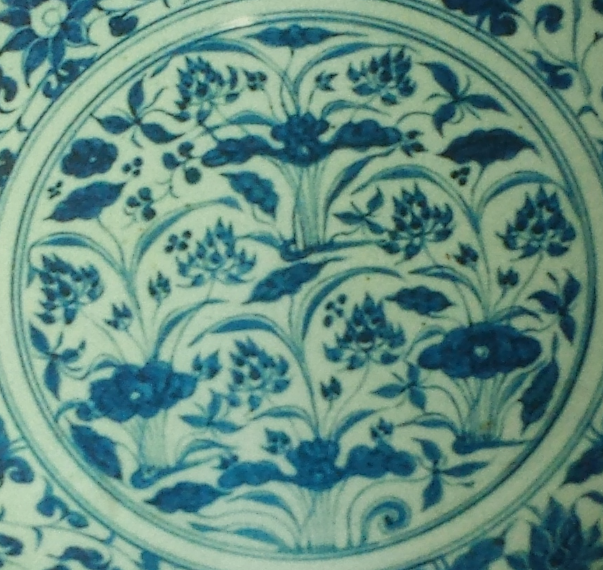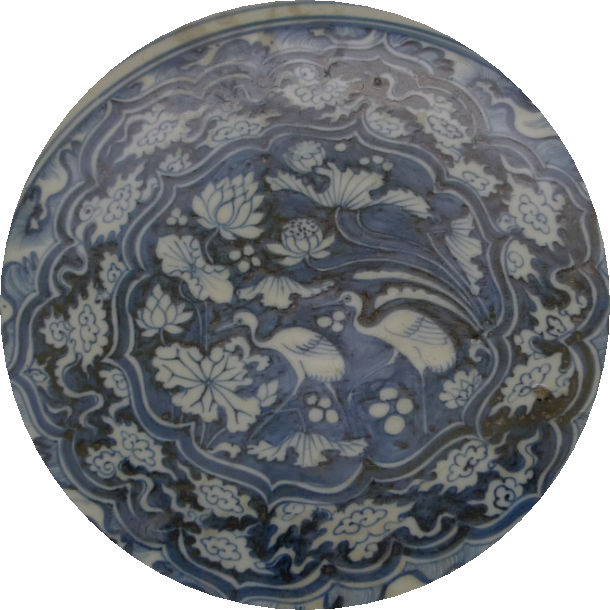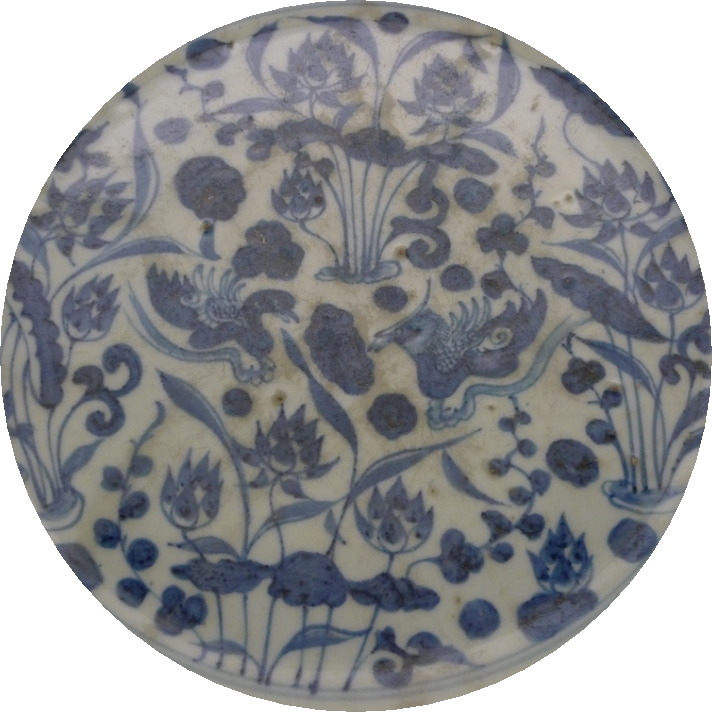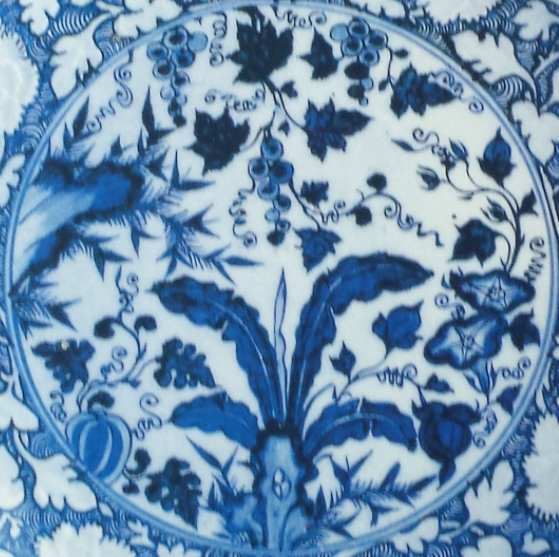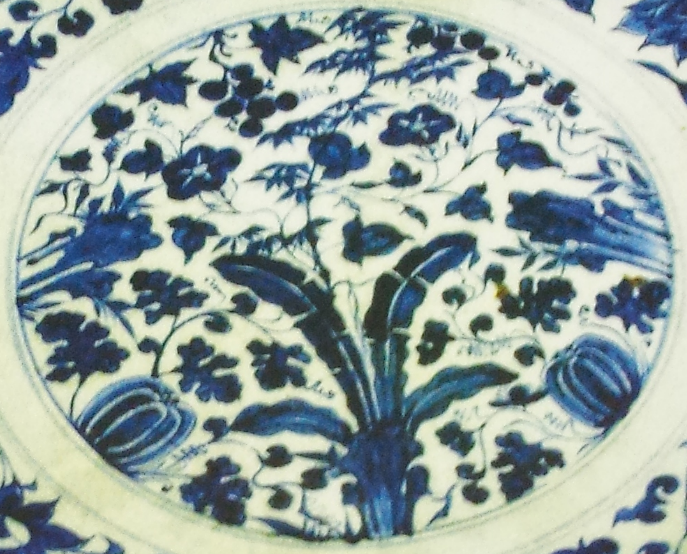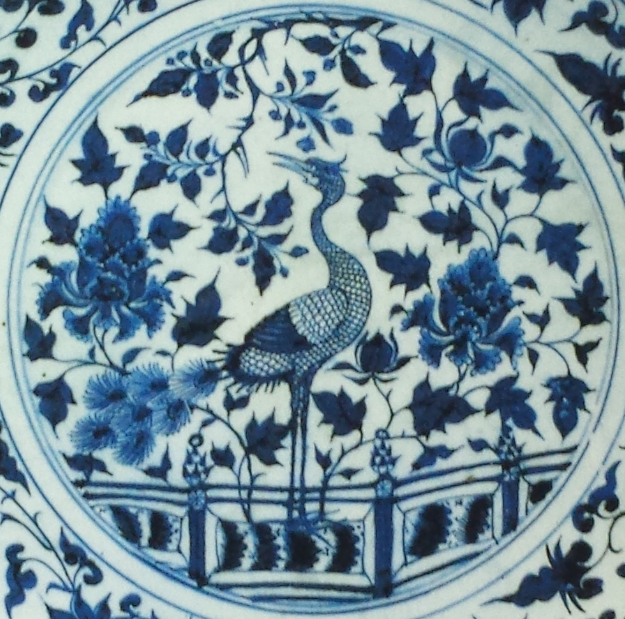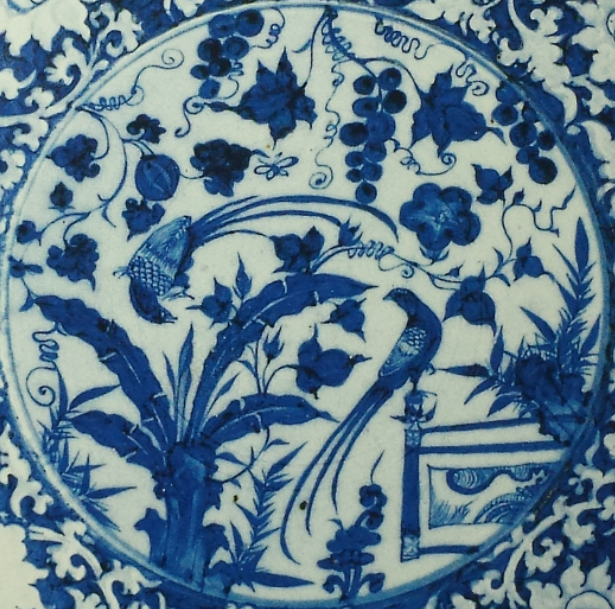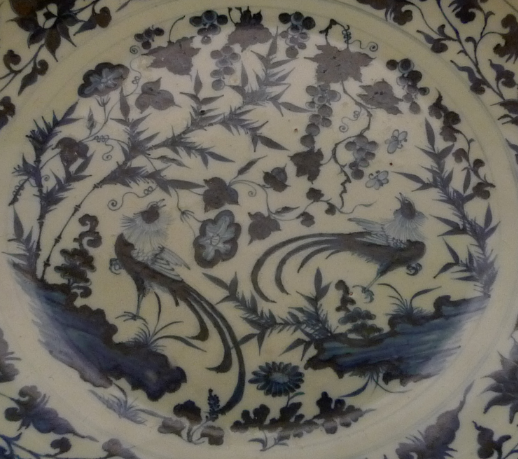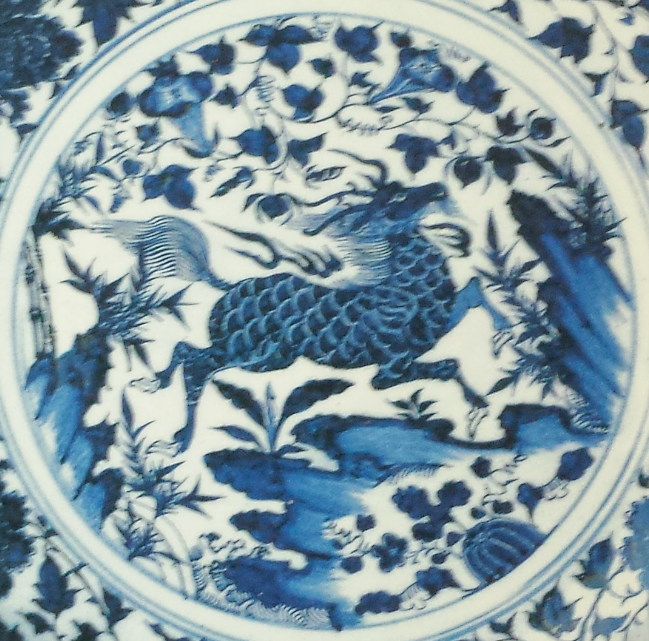Blue-and-white porcelain plate with design of lotus flowers and double fishes
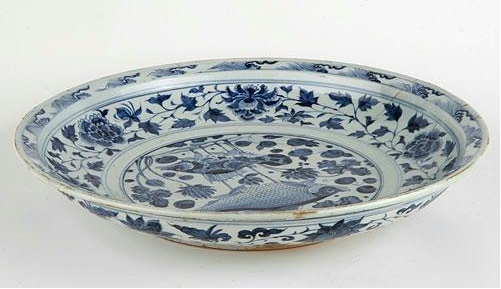
Yuan Dynasty (1271 - 1368)
Height: 7.9cm; Diameter of mouth: 45cm; Diameter of bottom: 25cm.
Unearthed from Changde, Hunan province in 1956.
The lip of the plate is inverted (slanting down), and its base is rather thin. With a relatively large size and thick body, the plate is fine and compact. The interior and the exterior of the plate are coated with shiny white glaze. The bottom is not coated with any glaze; the mark of radial lines can be therefore clearly seen. The plate is decorated with exquisite layered patterns and each layer is very distinct from the other. The interior is divided into three parts by two concentric circles. The exterior layer is designed with entwined offshoots of a pomegranate tree. The rim is decorated with the ocean waves while the middle part between the rim and the well is decorated with entwined peony offshoots. The interior bottom of the plate is designed with fishes and water plants in a lotus pond. The lotus flowers are in full blossom, with a chub and a mandarin fish swimming around, representing the meaning “enjoying prosperity and wealth year after year”.
It can be easily discerned that the major pattern of the fishes and water plants and the other supporting patterns are not designed by one craftsman, as the major pattern demonstrates superb craftsmanship. The fishes are vividly depicted, with their mouths opening slightly, the tails waving and the fins moving gently in the water. The application of the smalt (a kind of pigment) is well mastered by the painter as the thick color area demonstrates dark black rusty spots. Fine brushwork and the color is characterized by the light and dark blue layers on the body of the fishes, since the colors gradually change from dark blue to light blue. The depiction of the lotus leaves represents the different shades due to the light. These techniques are only embodied in the major pattern, not seen in the supporting patterns. Such kinds of differences regarding the craftsmanship between the major pattern and the supporting patterns on the blue and white porcelains are common.
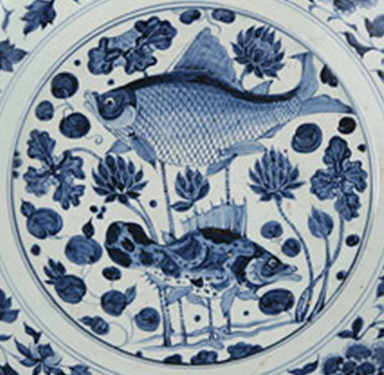
The plate is a typical product made by the Jingdezhen kiln. In Yuan Dynasty, Jingdezhen kiln was very famous, as people said, “It attracts a lot of skilled craftsmen from everywhere, and its products are sold all over China and beyond.” By integrating the advanced technologies used by other kilns, Jingdezhen kiln improved its technologies in producing porcelain remarkably. What’s worth noting is the adding of Kaolin (a kind of clay peculiar to Jingdezhen) into the porcelain clay, also called “the recipe of two key elements”, which enhanced the quality of the porcelain body as it could withstand higher temperatures. With the adoption of this technique, high quality porcelains with larger size and height could be produced.
深入探索
The Ornamentation on the Blue-and-white Porcelain Plates of Yuan Dynasty
The blue-and-white porcelain plates are a common type of the porcelains of Yuan Dynasty, like that of high heel bowls, cups, vases and jars. Besides blue-and-white porcelain plates which is also named the white background and the blue flowers, there is another extremely precious type: the blue background and the white flowers. Some of the ornamentation is painted; other stenciled or with both techniques combined. Most of the plates are relative large, as the diameter at the mouth extends from 40cm to 60cm. The lips of the plates are usually inverted (slanting down) or flat, with the round shape or the rhombus shape. Such a type originated from Yuan Dynasty, catering to the dietary habits of the Mongolians and the people from the Central and West Asia. It imitated the large pottery plates and metal plates used by those peoples mentioned above. Mongolians shared similar dietary habits to the people in Central and West Asia, people sitting in a circle on a carpet, surrounding the large plates and bowls placed with ample food. They shared the food together. Many miniatures of the 14th to 15th century vividly depict such dining scenes. Wonders Overseas, a book written by Ma Huan of Ming Dynasty, records that people in the Central and West Asia used large plates to contain food. They put the butter and soup upon the food, sitting on the floor and eating the food with their hands.
Although the shape of the blue and white porcelain plates originated from the Central and West Asia, the ornamentation on the plates integrated the Han culture, Islamic culture and the Tibetan Buddhism. The ornamentation is usually closely packed together, with distinct layers and Islamic decoration style. The ornamentation is embodied with a lot of Han culture characteristics. According to the place and importance, the ornamentation is classified into three kinds: rim ornamentation, supporting ornamentation and major ornamentation.
The rim ornamentation refers to the ornamentation along the rim of the plate, including the following patterns: the pattern of ocean waves, the pattern of the diamond-shaped grids, the pattern of the entwined gardenia, the pattern of entwined chrysanthemum, the pattern of coiled weed and so on. Sometimes, two different patterns are combined. Such a kind of combination seems to be randomly chosen by the artists.
